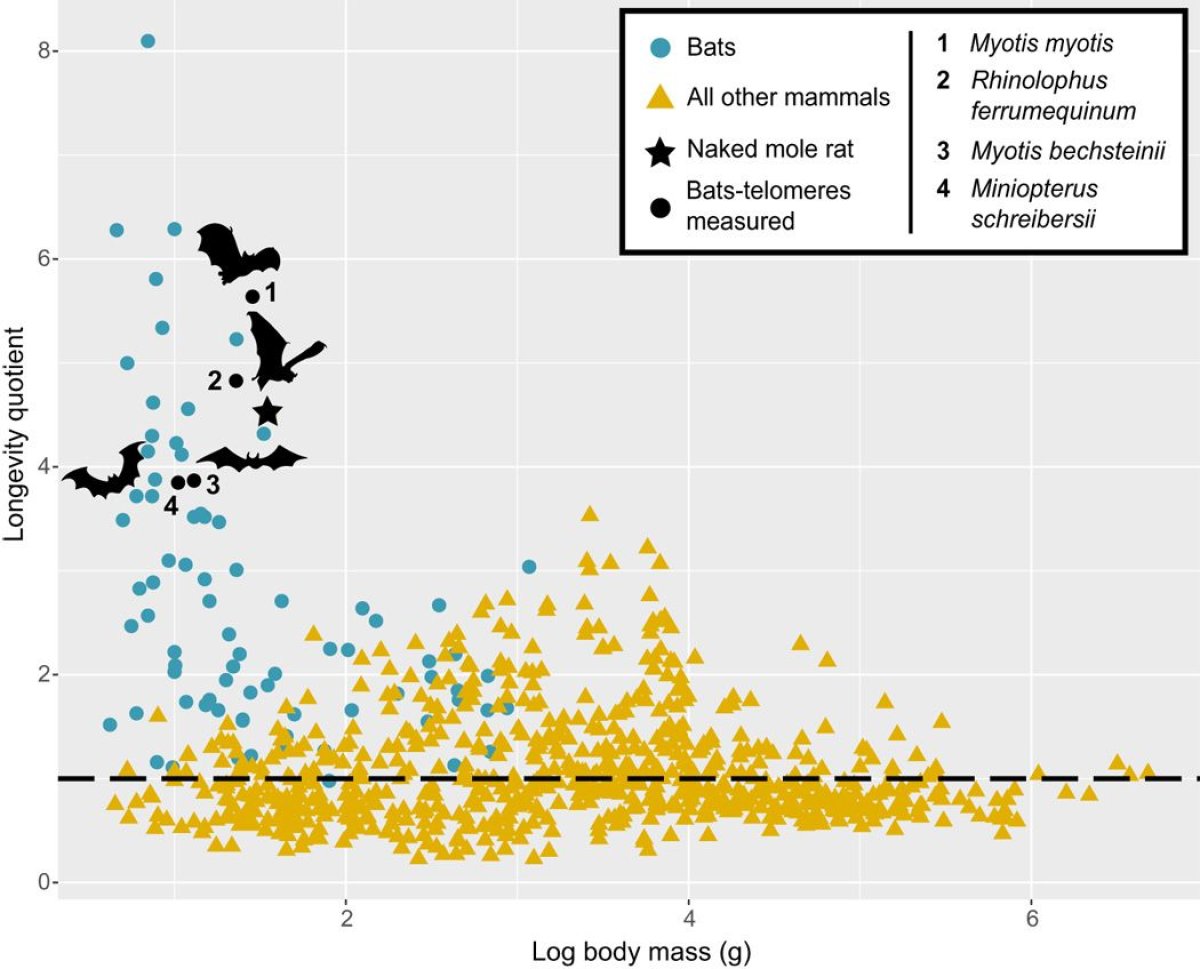
Immortality may be unattainable, but there's nothing wrong with seeking a longer life. And part of the answer might lie at the ends of bat DNA.
Typically, small mammals like mice reproduce fast and die young. The oldest mouse-eared bat ever captured of the Myotis genus was 41 years old, and they regularly live past 20 or 30. While they don't live as long as the average human does, these flying creatures live extremely long considering their size—nearly 10 times longer than an animal of that size would be predicted to live.
An international team of researchers wanted to figure out how the bats manage to live so long, so they investigated the DNA of 500 bats representing four species. They published their research on Wednesday in the journal Science Advances .
The scientists took DNA biopsies of the animals, marked them and released them. The researchers then flash-froze some of the DNA samples and dessicated others with silica beads to see how the chromosomes would respond to something that should age DNA.
What they found was that two of the bats aged normally, like humans do. But two, from the extremely long-lived mouse-eared genus, showed no signs of aging after this process.
They discovered this surprising power in the telomeres of the DNA. Telomeres are like the "aglets," or plastic caps at the end of your shoelaces: they don't function the way the rest of the shoelace does, but they prevent fraying. As our cells divide, usually those telomeres wear down and suffer the effects of aging.
"Bats showed no expression of telomerase but rather, may have evolved a unique process to lengthen their chromosomes without inducing cancer," Emma Teeling from University College Dublin, senior author of the scientific paper, explained in a press release. "These are exciting new results that we need to further explore to uncover how bats can remain healthy as time passes."

Scientists still aren't sure how other species of bats are able to live so long since it's only the mouse-eared genus that has apparently immortal telomeres. However, they did note that other species of bats express a gene that helps to maintain and repair telomeres. They frey, like the caps at the end of your shoelace, but they don't frey as fast or as badly with these genes.
A mouse-eared bat weighs about 1/648 as much as a human and can regularly live around 20 or 30 years. If humans lived a proportional amount of time, we'd have drastically longer lifespans.
Uncommon Knowledge
Newsweek is committed to challenging conventional wisdom and finding connections in the search for common ground.
Newsweek is committed to challenging conventional wisdom and finding connections in the search for common ground.
About the writer
Kristin is a science journalist in New York who has lived in DC, Boston, LA, and the SF Bay Area. ... Read more
To read how Newsweek uses AI as a newsroom tool, Click here.








